2015 News
December
Piping Plovers May Not Benefit From Watershed Drainage
 The federally threatened piping plover (Charadrius melodus) breeds in habitats of the Prairie Pothole Region (PPR) which naturally fluctuate in response to wet-dry periods: riverine sandbars; reservoir shorelines; and prairie wetlands. As certain areas across the region flood, covering the shorelines that plovers utilize for nesting, the population shifts to other areas across the region. Watersheds across the PPR have experienced “consolidation drainage” (drainage of many, smaller wetlands into fewer, bigger, wetter wetlands) to dry up land for farming and create irrigation reservoirs. The study found that the plovers had a 99.6% greater chance of turning up in undrained watersheds compared to areas that had 10% of their water drained, suggesting that these wetlands may have historically played a larger role in plover ecology than previously thought.
The federally threatened piping plover (Charadrius melodus) breeds in habitats of the Prairie Pothole Region (PPR) which naturally fluctuate in response to wet-dry periods: riverine sandbars; reservoir shorelines; and prairie wetlands. As certain areas across the region flood, covering the shorelines that plovers utilize for nesting, the population shifts to other areas across the region. Watersheds across the PPR have experienced “consolidation drainage” (drainage of many, smaller wetlands into fewer, bigger, wetter wetlands) to dry up land for farming and create irrigation reservoirs. The study found that the plovers had a 99.6% greater chance of turning up in undrained watersheds compared to areas that had 10% of their water drained, suggesting that these wetlands may have historically played a larger role in plover ecology than previously thought.
October
Congress Terminates Important Land Conservation Program – Land and Water Conservation Fund (LWCF)
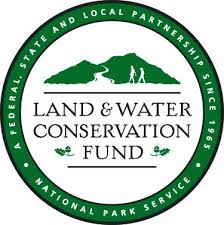 One of America’s premier conservation programs, the Land and Water Conservation Fund (LWCF), expired on September 30th after Congress failed to renew it. Beginning in 1965 with bipartisan support, the LWCF has protected national parks, wildlife refuges, and forests as well as provided matching grants for local, state, and federal recreation projects using only revenues from offshore oil & gas development. Over its 50-year history, LWCF has protected land in every state, supported over 41,000 state and local park projects, and permanently protected nearly five million acres of federal public lands. The fund was authorized to receive up to $900 million each year from drilling in federal waters, although Congress has only once appropriated this full amount despite significant increases in the energy revenues the federal government collects. More information on the LWCF and its recent expiration are available here, here, and here.
One of America’s premier conservation programs, the Land and Water Conservation Fund (LWCF), expired on September 30th after Congress failed to renew it. Beginning in 1965 with bipartisan support, the LWCF has protected national parks, wildlife refuges, and forests as well as provided matching grants for local, state, and federal recreation projects using only revenues from offshore oil & gas development. Over its 50-year history, LWCF has protected land in every state, supported over 41,000 state and local park projects, and permanently protected nearly five million acres of federal public lands. The fund was authorized to receive up to $900 million each year from drilling in federal waters, although Congress has only once appropriated this full amount despite significant increases in the energy revenues the federal government collects. More information on the LWCF and its recent expiration are available here, here, and here.
ASWM and SWS Sign a Collaborative Agreement
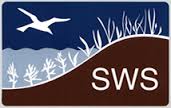
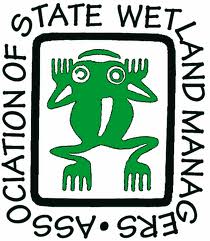 After envisioning a collaborative partnership since the year 2000, the Society of Wetland Scientists (SWS) announced the signing of a 5-year Memorandum of Cooperation agreement with the Association of State Wetland Managers (ASWM). The SWS and ASWM share the common goals of encouraging sound science in wetland research, management, restoration, policy, and conservation. This collaboration allows both organizations to leverage each other’s strengths (and their various partners) in meeting those goals, already outlining several initiatives that will enhance cooperation between the groups.
After envisioning a collaborative partnership since the year 2000, the Society of Wetland Scientists (SWS) announced the signing of a 5-year Memorandum of Cooperation agreement with the Association of State Wetland Managers (ASWM). The SWS and ASWM share the common goals of encouraging sound science in wetland research, management, restoration, policy, and conservation. This collaboration allows both organizations to leverage each other’s strengths (and their various partners) in meeting those goals, already outlining several initiatives that will enhance cooperation between the groups.
Laysan Duck joins Cultural Ceremony at Midway Atoll
Wetlands-Related Activities Abound at National TWS Meeting; Working Group Logo Contest EXTENDED to November 16, 2015
Join your fellow wetland enthusiasts at the National TWS Meeting in Winnipeg, Manitoba at the following 3 wetland-related events!
Wetlands Working Group annual meeting: Monday, 10/19, 1-2:30pm, Kildonan Room at the Delta Hotel. We will be raffling off a ticket for the Wed 10/21 Oak Hammock Marsh Field Trip!
Oak Hammock Marsh Field Trips: Tues, 10/20, 1-5pm and Wed, 10/21, 8:30am-12:30pm
Wetland Ecology and Restoration Workshop: Sat, 10/17, 8am-5pm
WWG Logo Contest: It’s time to update our image! Are you artistic and creative? Do you like to draw and doodle? Does the possibility of winning $100 get your creative juices flowing? Would you like to see your artwork as the logo for a national group dedicated to promoting wetland education and outreach? If you answered yes to these questions . . . . . . . . . . click here!
September
Researchers Enhance Nesting Efficiency for Wood Ducks
 A study recently published in the Journal of Wildlife Management found that larger artificial nest boxes — about a foot across and 20 inches tall — produced more wood duck fledglings than standard, smaller boxes which often fall victim to dump nesting. Once clutches reach 20 to 40 eggs, hens often abandon them. In this Mississippi State University study, the larger next boxes produced approximately four duck recruits that were hatched and reared compared to one duck produced in smaller boxes. Researchers also found that when nests are abandoned, cleaning out old material and replacing it with new wood shavings helps increase duckling production by 30 percent and that wood duck young survived better in August than earlier clutches, possibly due to more vegetation for hiding cover and alternate prey for predators. For more on this story, click here.
A study recently published in the Journal of Wildlife Management found that larger artificial nest boxes — about a foot across and 20 inches tall — produced more wood duck fledglings than standard, smaller boxes which often fall victim to dump nesting. Once clutches reach 20 to 40 eggs, hens often abandon them. In this Mississippi State University study, the larger next boxes produced approximately four duck recruits that were hatched and reared compared to one duck produced in smaller boxes. Researchers also found that when nests are abandoned, cleaning out old material and replacing it with new wood shavings helps increase duckling production by 30 percent and that wood duck young survived better in August than earlier clutches, possibly due to more vegetation for hiding cover and alternate prey for predators. For more on this story, click here.
August
Judge blocks Waters of the U.S. Rule in 13 states
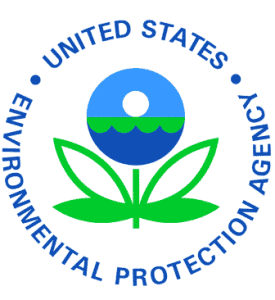 On August 29, 2015, a federal judge in North Dakota on Thursday temporarily blocked the full implementation of the Obama Administration’s Waters of the U.S. rule. This rule, which was set to go into effect on August 28th in all fifty states, expands Clean Water Act protections to smaller wetlands, streams, and tributaries to ensure a clean water supply. Although the attorney who filed the injunction believes this this preliminary injunction applies to all 50 states, the EPA has stated it only applies to the 13 states involved in the case and began enacting the rule throughout the rest of the U.S. on Friday the 28th. These 13 states, which include Alaska, Arizona, Arkansas, Colorado, Idaho, Missouri, Montana, Nebraska, Nevada, New Mexico, North Dakota, South Dakota and Wyoming, will still have to adhere to existing Clean Water Act protections granted to major waterways such as lakes and rivers. For more on this story, click here and here.
On August 29, 2015, a federal judge in North Dakota on Thursday temporarily blocked the full implementation of the Obama Administration’s Waters of the U.S. rule. This rule, which was set to go into effect on August 28th in all fifty states, expands Clean Water Act protections to smaller wetlands, streams, and tributaries to ensure a clean water supply. Although the attorney who filed the injunction believes this this preliminary injunction applies to all 50 states, the EPA has stated it only applies to the 13 states involved in the case and began enacting the rule throughout the rest of the U.S. on Friday the 28th. These 13 states, which include Alaska, Arizona, Arkansas, Colorado, Idaho, Missouri, Montana, Nebraska, Nevada, New Mexico, North Dakota, South Dakota and Wyoming, will still have to adhere to existing Clean Water Act protections granted to major waterways such as lakes and rivers. For more on this story, click here and here.
Montana Senator Daines supports Land and Water Conservation Fund
The sun beat down on the Madison Valley as Montana’s U.S. Sen. Steve Daines (R) sat smiling in a lawn chair holding a 97-day-old trumpeter swan — one of five that would be released into the restored wetlands of O’Dell Creek. Daines went to Ennis and visited the Granger Ranches near O’Dell Creek, the site of a major wetlands restoration project over the last decade. Later that day, Daines spoke at a meeting of the High Divide Collaborative, a collection of land trusts, rancher groups, sportsmen’s organizations and government agencies from southwestern Montana and eastern Idaho where he stressed the importance of permanently reauthorizing the Land and Water Conservation Fund (LWCF). The LWCF is a pot of cash from offshore drilling royalties that has helped bankroll conservation projects and park construction since the mid-1960s. The fund expires Sept. 30, and Daines is backing two potential ways to make the fund permanent, S.338 and S.2012. For more information, click here.
June
ASWM Releases Monitoring and Assessment Report to Help State and Tribal Programs
 The Association of State Wetland Managers (ASWM) released a new report this month titled ‘Uses of Monitoring and Assessment: Considerations for State and Tribal Programs‘. This report – which was prepared with financial assistance from an EPA State Wetland Program Development Grant – explores the various ways that states and tribes could make better use of existing monitoring and assessment methods to obtain science-based answers to wetland management problems. While it provides an overview of many common approaches to wetland monitoring, the focus is primarily on why these methods are selected for a given purpose. This report encourages the thoughtful identification of the most appropriate and efficient methods in light of available financial and staff resources. It may be particularly useful to states or tribes that are developing or updating wetland monitoring and assessment strategies.
The Association of State Wetland Managers (ASWM) released a new report this month titled ‘Uses of Monitoring and Assessment: Considerations for State and Tribal Programs‘. This report – which was prepared with financial assistance from an EPA State Wetland Program Development Grant – explores the various ways that states and tribes could make better use of existing monitoring and assessment methods to obtain science-based answers to wetland management problems. While it provides an overview of many common approaches to wetland monitoring, the focus is primarily on why these methods are selected for a given purpose. This report encourages the thoughtful identification of the most appropriate and efficient methods in light of available financial and staff resources. It may be particularly useful to states or tribes that are developing or updating wetland monitoring and assessment strategies.
April
Clean Water Ruling One Step Closer to Finalization

 The U.S. Army Corps of Engineers and Environmental Protection Agency (EPA) have recently taken steps to finalize their Waters of the United States rule by sending the final rule to the Office of Management and Budget (OMB) for review. The Waters of the United States Rule is aimed at more clearly defining which water bodies are included in the Clean Water Act, which primarily governs water pollution within the country. TWS submitted comments on the proposed rule, suggesting changes to specific language to strengthen the rule’s basis in current scientific information. The EPA has stated that the most recent draft of the rule better gives special consideration to “other waters,” such as the prairie potholes that support the majority of North America’s waterfowl populations. Supporters of the rule say the clarification will end inconsistent and drawn-out processes and better protect aquatic resources, but the rule has been the subject of criticism by some lawmakers. OMB has at least 90 days to review the draft and can request revisions or move the rule forward to be finalized and put into effect.
The U.S. Army Corps of Engineers and Environmental Protection Agency (EPA) have recently taken steps to finalize their Waters of the United States rule by sending the final rule to the Office of Management and Budget (OMB) for review. The Waters of the United States Rule is aimed at more clearly defining which water bodies are included in the Clean Water Act, which primarily governs water pollution within the country. TWS submitted comments on the proposed rule, suggesting changes to specific language to strengthen the rule’s basis in current scientific information. The EPA has stated that the most recent draft of the rule better gives special consideration to “other waters,” such as the prairie potholes that support the majority of North America’s waterfowl populations. Supporters of the rule say the clarification will end inconsistent and drawn-out processes and better protect aquatic resources, but the rule has been the subject of criticism by some lawmakers. OMB has at least 90 days to review the draft and can request revisions or move the rule forward to be finalized and put into effect.March
Disappearing Arctic ponds could affect carbon flux, energy balance, biodiversity, migratory birds
Ponds from north Alaska that provide “a mecca” for migratory birds and some threatened duck species are shrinking and disappearing, according to a new study. “These birds will likely be affected because most of these birds feed on this system and in these ponds,” said Christian Andresen, a postdoctoral landscape ecology research at the University of Texas at El Paso and lead author on a study published recently in the Journal of Geophysical Research: Biogeosciences. The study team analyzed satellite and historical photos from 1948 to 2010 to track long-term changes in more than 2,800 ponds on the Barrow Peninsula in Alaska. Researchers found that the number of ponds had shrunk by around 17 percent while the size of the small water bodies had diminished by around a third. Increased evaporation due to warmer and longer summers, permafrost degradation, and transpiration from encroaching aquatic emergent macrophytes are likely the factors contributing to the decline in surface area and number of ponds. For more on this story, click here.
Publication discusses synergy of waterfowl hunting and habitat conservation in N.A.
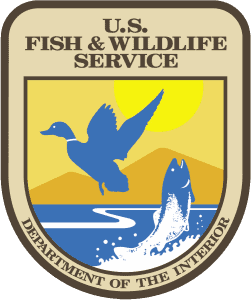
 A recent publication by Michael Anderson of Ducks Unlimited (DU) and Paul Padding of the U.S. Fish and Wildlife Service (FWS) discusses the multi-faceted, synergistic North American (N.A.) approach to waterfowl management. This approach includes broad support by hunters through license sales, the federal Duck Stamp, and the Pittman-Robertson Act while hunting regulations are set by the FWS and regional Flyway Councils. Wetland and grassland conservation policy measures like the N.A. Wetlands Conservation Act provide federal funding for habitat work, conservation provisions in the U.S. Farm Bill incentivize private conservation efforts, and regional Joint Ventures formed to fuse government and private interests to fulfill waterfowl life history needs. Non-government organizations like DU and Delta Waterfowl are member-funded and work cooperatively with other NGOs, state and federal agencies, and Co-op Wildlife Research Units at land-grant universities in waterfowl and habitat research, management, and on-the-ground efforts. As a consequence of these efforts and the resilience of waterfowl populations, these species have fared better than most guilds of migratory birds despite the prolonged droughts of the 1930s. Threats to remaining habitats and the waning connections of people to wild things and wild places comprise the most serious challenges to sustaining this system.
A recent publication by Michael Anderson of Ducks Unlimited (DU) and Paul Padding of the U.S. Fish and Wildlife Service (FWS) discusses the multi-faceted, synergistic North American (N.A.) approach to waterfowl management. This approach includes broad support by hunters through license sales, the federal Duck Stamp, and the Pittman-Robertson Act while hunting regulations are set by the FWS and regional Flyway Councils. Wetland and grassland conservation policy measures like the N.A. Wetlands Conservation Act provide federal funding for habitat work, conservation provisions in the U.S. Farm Bill incentivize private conservation efforts, and regional Joint Ventures formed to fuse government and private interests to fulfill waterfowl life history needs. Non-government organizations like DU and Delta Waterfowl are member-funded and work cooperatively with other NGOs, state and federal agencies, and Co-op Wildlife Research Units at land-grant universities in waterfowl and habitat research, management, and on-the-ground efforts. As a consequence of these efforts and the resilience of waterfowl populations, these species have fared better than most guilds of migratory birds despite the prolonged droughts of the 1930s. Threats to remaining habitats and the waning connections of people to wild things and wild places comprise the most serious challenges to sustaining this system.
Experimenting with potential water hyacinth benefits in Florida’s Crystal Lake NWR
Water hyacinth (Eichhornia crassipes) is a notoriously aggressive floating aquatic plant which can form impenetrable mats and deplete the water of dissolved oxygen—effectively shading out other aquatic plants and suffocating fish and other fauna. After its introduction to Crystal Lake National Wildlife Refuge in Kings Bay Florida in the late 1950s, water hyacinth quickly became a nuisance. Soon thereafter, hydrilla (Hydrilla verticillata) was introduced to the area, its eradication methods including sulfuric acid, many rounds of copper-based and other herbicides, manual harvesting, and mechanical shredding. Now, higher salinity and increased turbidity have made Kings Bay unfavorable to hydrilla as well as the native eelgrasses that once was the food base for manatees here. Of further concern are the extreme algal blooms in the bay which fill the water column and have the ability to produce toxins lethal to manatees. Although many states, agencies, and biologists have spent their careers trying to eradicate water hyacinth, a controversial study in Kings Bay is placing the invasive plant in enclosures in treatment areas across the bay. The shade these floating mats provide could block growth of free-floating algae over a portion of the bay, reduce overall turbidity, and help eelgrasses and other submerged plants regain a competitive edge while reducing excess nutrients and improving water clarity. For more on this story, click here.
February
EPA releases ‘Estuary Data Mapper’ application
 As the spots that link freshwater from rivers and saltwater from the ocean, estuaries thrive as productive environments that support distinctive communities of plants and animals. Current and historic data on estuary conditions are necessary for researchers to make informed decisions on protecting and preserving these unique environments. But with approximately 2,000 estuaries along the five US coastal regions (Atlantic, Gulf of Mexico, Pacific, Alaska, and Hawaii), scientists have amassed a lot of data to keep track of, and it’s spread out among many different agencies and organizations. Traditionally, it has been a challenge to pull all that information together to see the big picture. EPA’s Estuary Data Mapper application changes that by providing a fast, easy way for researchers to zoom into a specific estuary of interest and find current, available data for that system. For more on this story, click here.
As the spots that link freshwater from rivers and saltwater from the ocean, estuaries thrive as productive environments that support distinctive communities of plants and animals. Current and historic data on estuary conditions are necessary for researchers to make informed decisions on protecting and preserving these unique environments. But with approximately 2,000 estuaries along the five US coastal regions (Atlantic, Gulf of Mexico, Pacific, Alaska, and Hawaii), scientists have amassed a lot of data to keep track of, and it’s spread out among many different agencies and organizations. Traditionally, it has been a challenge to pull all that information together to see the big picture. EPA’s Estuary Data Mapper application changes that by providing a fast, easy way for researchers to zoom into a specific estuary of interest and find current, available data for that system. For more on this story, click here.
ASWM continues webinar series titled “Improving Wetland Restoration Success” through 2015
 A working group facilitated by the Association of State Wetland Managers (ASWM) consisting of twenty five restoration experts (including practitioners, regulators, policy makers and academics) has developed a monthly webinar series titled “Improving Wetland Restoration Success”. The collective effort of these webinars is part of a larger ASWM effort to examine the underlying reasons for restoration failure and to provide implementable solutions. The findings presented in these webinars will be published in a white paper that summarizes the identified barriers to success, lessons learned, and future recommendations. Starting in September of 2014, these monthly webinars have been currently scheduled through July 2015 with more planned.
A working group facilitated by the Association of State Wetland Managers (ASWM) consisting of twenty five restoration experts (including practitioners, regulators, policy makers and academics) has developed a monthly webinar series titled “Improving Wetland Restoration Success”. The collective effort of these webinars is part of a larger ASWM effort to examine the underlying reasons for restoration failure and to provide implementable solutions. The findings presented in these webinars will be published in a white paper that summarizes the identified barriers to success, lessons learned, and future recommendations. Starting in September of 2014, these monthly webinars have been currently scheduled through July 2015 with more planned.
TWS adds three new avian-related policy briefs to inform membership
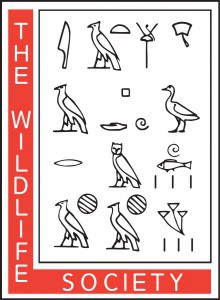 The Wildlife Society’s (TWS) Government Affairs & Partnership program has released three new additions to the Policy Brief Series, TWS’s go-to resource for federal policies and programs impacting wildlife. All three of these briefs have an avian focus, providing information regarding the Bald and Golden Eagle Protection Act, Lacey Act, and North American Wetlands Conservation Act and how they were first enacted to protect North American bird populations. Each Policy Brief provides a quick synopsis of the motivation, methodology, and results of the policy or program and how it impacts wildlife professionals and their work of conservation. Other policy briefs also relate to wetlands conservation including the Duck Stamp Act, the Farm Bill, and others.
The Wildlife Society’s (TWS) Government Affairs & Partnership program has released three new additions to the Policy Brief Series, TWS’s go-to resource for federal policies and programs impacting wildlife. All three of these briefs have an avian focus, providing information regarding the Bald and Golden Eagle Protection Act, Lacey Act, and North American Wetlands Conservation Act and how they were first enacted to protect North American bird populations. Each Policy Brief provides a quick synopsis of the motivation, methodology, and results of the policy or program and how it impacts wildlife professionals and their work of conservation. Other policy briefs also relate to wetlands conservation including the Duck Stamp Act, the Farm Bill, and others.
NRCS proposes changes to State Off-Site Methods for wetland determinations and mapping in IA, MN, ND, and SD
 Changes were recently proposed by the Natural Resources Conservation Service (NRCS) regarding the State Off-site Methods (SOSM) for wetland determinations and mapping in Iowa, Minnesota, and the Dakotas. Agricultural producers that are voluntarily participating in NRCS and Farm Service Agency (FSA) programs must comply with wetland conservation provisions, which prohibit both converting wetlands to allow for agricultural production and producing agricultural commodities on a converted wetland. Non-compliance can affect producer’s ability to receive conservation program benefits. The proposed changes to SOSM which involve the technicalities of wetland determinations and mapping made remotely (off-site) may alter which areas can be used for agricultural production while remaining in compliance with these conservation provisions. Several groups made comments on these proposed changes including The Wildlife Society (in partnership with the IA, ND, and SD TWS Chapters, and several other conservation and sportsmen’s groups), the Minnesota Chapter of TWS, Ducks Unlimited, and the U.S. Fish and Wildlife Service. The goal of the TWS comments is to encourage the proposed changes: 1. Maintain the same accuracy in providing data for wetland determination as previous wetland mapping procedures; 2. Are not biased against seasonal and temporary wetlands (which are 9 out of 10 wetlands in the U.S. Prairie Pothole Region (PPR)) by using FSA late-season imagery; 3. Have revised methods for determining which years are considered “normal” since potential wetlands must be evaluated under “normal climatic conditions’ or “normal environmental conditions”; and 4. Use high resolution LIDAR remote imaging for wetland location, size, and classification determinations and mapping. For more on this story, click here.
Changes were recently proposed by the Natural Resources Conservation Service (NRCS) regarding the State Off-site Methods (SOSM) for wetland determinations and mapping in Iowa, Minnesota, and the Dakotas. Agricultural producers that are voluntarily participating in NRCS and Farm Service Agency (FSA) programs must comply with wetland conservation provisions, which prohibit both converting wetlands to allow for agricultural production and producing agricultural commodities on a converted wetland. Non-compliance can affect producer’s ability to receive conservation program benefits. The proposed changes to SOSM which involve the technicalities of wetland determinations and mapping made remotely (off-site) may alter which areas can be used for agricultural production while remaining in compliance with these conservation provisions. Several groups made comments on these proposed changes including The Wildlife Society (in partnership with the IA, ND, and SD TWS Chapters, and several other conservation and sportsmen’s groups), the Minnesota Chapter of TWS, Ducks Unlimited, and the U.S. Fish and Wildlife Service. The goal of the TWS comments is to encourage the proposed changes: 1. Maintain the same accuracy in providing data for wetland determination as previous wetland mapping procedures; 2. Are not biased against seasonal and temporary wetlands (which are 9 out of 10 wetlands in the U.S. Prairie Pothole Region (PPR)) by using FSA late-season imagery; 3. Have revised methods for determining which years are considered “normal” since potential wetlands must be evaluated under “normal climatic conditions’ or “normal environmental conditions”; and 4. Use high resolution LIDAR remote imaging for wetland location, size, and classification determinations and mapping. For more on this story, click here.
January
EPA releases final ‘Connectivity of Streams and Wetlands to Downstream Waters’ report
 The Environmental Protection Agency’s (EPA) Office of Research and Development has finalized the report ‘Connectivity of Streams and Wetlands to Downstream Waters: A Review and Synthesis of the Scientific Evidence‘, announcing its availability in a January 15, 2015 Federal Register Notice. The draft version of this report has gone through several iterations over a long evolution including a peer-review process, public comment period, and review by the EPA’s Science Adisory Board. On behalf of The Wildlife Society, the Wetlands Working Group reviewed the draft released in September 2013, submitting their official comments to the EPA. The final report reviews more than 1,200 peer-reviewed publications and summarizes current scientific understanding about the connectivity and mechanisms by which streams and wetlands, singly or in aggregate, affect the physical, chemical, and biological integrity of downstream waters. The report focuses on surface and shallow subsurface connections by which small or temporary streams, nontidal wetlands, and open waters affect larger waters such as rivers, lakes, reservoirs, and estuaries.
The Environmental Protection Agency’s (EPA) Office of Research and Development has finalized the report ‘Connectivity of Streams and Wetlands to Downstream Waters: A Review and Synthesis of the Scientific Evidence‘, announcing its availability in a January 15, 2015 Federal Register Notice. The draft version of this report has gone through several iterations over a long evolution including a peer-review process, public comment period, and review by the EPA’s Science Adisory Board. On behalf of The Wildlife Society, the Wetlands Working Group reviewed the draft released in September 2013, submitting their official comments to the EPA. The final report reviews more than 1,200 peer-reviewed publications and summarizes current scientific understanding about the connectivity and mechanisms by which streams and wetlands, singly or in aggregate, affect the physical, chemical, and biological integrity of downstream waters. The report focuses on surface and shallow subsurface connections by which small or temporary streams, nontidal wetlands, and open waters affect larger waters such as rivers, lakes, reservoirs, and estuaries.
Failed projects and weak oversight lead to loss of Massachusetts’ wetlands
Three decades ago, Massachusetts became a darling of the environmental movement for requiring developers to replace virtually every square foot of wetlands they destroyed to build houses, parking lots and shopping malls. The policy was designed to slow the destruction of one of nature’s most underappreciated resources: Swamps, marshes, seasonal ponds and other soggy places that filter pollution, host threatened species and control floodwaters. Today, the state’s landscape is pocked with hundreds of examples of that policy’s failure, an examination by the New England Center for Investigative Reporting has found. For more on this story, click here.
President Obama signs H.R. 5069 increasing duck stamp prices from $15 to $25
 After passing through the House of Representatives in November and the Senate in early December, the Federal Ducks Stamp Act of 2014 (H.R. 5069) was signed into law by President Barack Obama later that month, increasing the price of Duck Stamps from $15 to $25. Migratory Bird Hunting and Conservation Stamps — better known as Duck Stamps — are permits required to hunt waterfowl in the United States. The money raised by the stamps goes to wetland conservation efforts that in turn lead to more waterfowl and waterfowl habitat. The long-awaited price increase is the first since 1991, marking the culmination of coordinated efforts from lawmakers and conservation organizations. Hundreds of letters from The Wildlife Society members were sent to their Congressmen, urging them to pass a bill.
After passing through the House of Representatives in November and the Senate in early December, the Federal Ducks Stamp Act of 2014 (H.R. 5069) was signed into law by President Barack Obama later that month, increasing the price of Duck Stamps from $15 to $25. Migratory Bird Hunting and Conservation Stamps — better known as Duck Stamps — are permits required to hunt waterfowl in the United States. The money raised by the stamps goes to wetland conservation efforts that in turn lead to more waterfowl and waterfowl habitat. The long-awaited price increase is the first since 1991, marking the culmination of coordinated efforts from lawmakers and conservation organizations. Hundreds of letters from The Wildlife Society members were sent to their Congressmen, urging them to pass a bill.
Researchers at Mississippi State University evaluate NRCS’ Migratory Bird Habitat Initiative
![]() The National Resources Conservation Service (NRCS) swiftly launched the Migratory Bird Habitat Initiative (MBHI) following the 2010 Deepwater Horizon oil spill in the Gulf of Mexico to enable farmers to create and enhance habitat for migratory birds, providing an alternative to habitat in impacted coastal ecosystems. NRCS invested $40 million in the initiative, which led to conservation practices implemented on more than 470,000 acres in Alabama, Arkansas, Florida, Georgia, Louisiana, Mississippi, Missouri and Texas. Beginning in November 2010, the Forest and Wildlife Research Center at Mississippi State University conducted a three-year evaluation of bird use of habitat and availability of food in rice fields, catfish ponds and wetlands managed through MBHI. The results were released in a fall 2014 report which demonstrated the importance of landscape-level conservation efforts. For more on this story, click here.
The National Resources Conservation Service (NRCS) swiftly launched the Migratory Bird Habitat Initiative (MBHI) following the 2010 Deepwater Horizon oil spill in the Gulf of Mexico to enable farmers to create and enhance habitat for migratory birds, providing an alternative to habitat in impacted coastal ecosystems. NRCS invested $40 million in the initiative, which led to conservation practices implemented on more than 470,000 acres in Alabama, Arkansas, Florida, Georgia, Louisiana, Mississippi, Missouri and Texas. Beginning in November 2010, the Forest and Wildlife Research Center at Mississippi State University conducted a three-year evaluation of bird use of habitat and availability of food in rice fields, catfish ponds and wetlands managed through MBHI. The results were released in a fall 2014 report which demonstrated the importance of landscape-level conservation efforts. For more on this story, click here.
*Wetland News reflects wetland-related news coverage in the media and is intended to foster the exchange of information about policy issues and science among the wetland community. Neither the Wetlands Working Group nor The Wildlife Society independently verifies any statements or assertions in these articles. Any opinions that may be expressed or products mentioned herein are those of the authors and do not necessarily reflect official policy of The Wildlife Society unless so stated.


